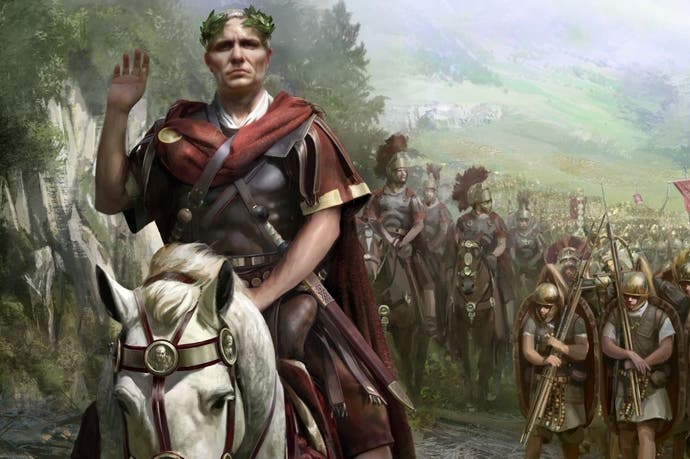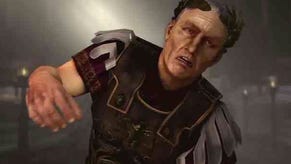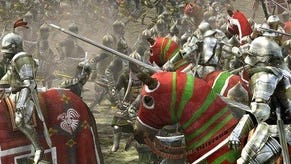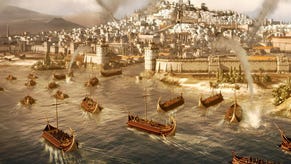Total War: Rome 2 - Caesar in Gaul review
Forum or against 'em?
Rome 2's Caesar in Gaul expansion campaign has a problem with recent history. Unfortunately for Caesar, The Creative Assembly has established a pattern of releasing novel and systemically distinctive follow-ups to their major releases. Shogun 2's Fall of the Samurai campaign was a fascinating collision of Age of Rifles technology and doctrine with the fading samurai way of war. The Peninsular Campaign expansion for Napoleon: Total War likewise tried to combine traditional Napoleonic warfare with the guerrilla war and counterinsurgency campaign fought across the Spanish countryside. Both these campaigns (and arguably, Napoleon: Total War itself) tweaked the core Total War game design in exciting ways to cover more specific conflicts and challenges.
Caesar in Gaul never rises to this level. It is, instead, Rome 2 on a different map. For people who were quite happy to buy what Rome 2 was selling, then Caesar in Gaul provides a bit more of the same in a more convenient package. For those who were hoping that Caesar might find a unique Total War experience beyond the Alps, this expansion is a bit of a disappointment.
Still, Caesar in Gaul cannot help but address one major problem with Rome 2: its unwieldy scope and slow pacing. Rome 2's main campaign could be a trudge through Roman history, as Roman fleets and legions inched their way across an improbably large map of Europe (even Odysseus would find crossing the Mediterranean in Rome 2 unrealistically difficult) and often struggled to find a major battle to fight. Gaul, on the other hand, is teeming with barbarian tribes and densely-packed provinces. Even better, a single game turn takes only a few seconds to process, as opposed to the constant thumb-twiddling of Rome 2's AI turns.

The narrowed scope and improved pacing extend to the game's time-scale. Caesar in Gaul slows the action down to half-months, meaning that changing seasons and weather arrive to lend some structure and flavour to the campaign. Winter quarters are now something you'll actually want to find, because a legion that force-marches through Switzerland in January isn't going to be a legion by the time it arrives in Burgundy. Likewise, autumn and spring campaigns occur against a backdrop of melodramatic storms and fog, although their effects don't seem nearly as impressive as the visuals accompanying them. Infantry march as cheerfully through washed-out farm fields as they do dry pastures in high summer, but at least the lighting gives Caesar's battles the atmosphere of a Gothic nightmare.
This time-scale also rescues agents and generals from their miserable Rome 2 existence, in which they were destined to die of old age before ever accruing enough skills to accomplish something meaningful. Now, that ace spy of yours won't drop dead after a dozen turns, but will instead turn into a sandaled Jane Bond. In fact, spies and champions become so effective that it borders on cartoonish. My top spy was such a gifted mass-poisoner that she could destroy entire armies in just a couple turns. There was no stopping her: no sooner would an army appear on my border than its men would mysteriously start dropping dead, and its units were down to 50% strength or worse before they ever engaged my troops.
This might be a bit of an over-correction. It's nice to have agents making a tangible difference to the outcome of the game, but it seems a little absurd to have a stable of a half-dozen spies, champions, and dignitaries who could destroy armies and cities for a few thousand gold. On the other hand, the AI uses its own agents well, so there's an entire "covert war" element to Caesar in Gaul that's really only comparable to the Peninsular War DLC for Napoleon.
While improvements are meaningful, they are also fairly modest. It's Rome 2 with more convenient geography and less tactical diversity
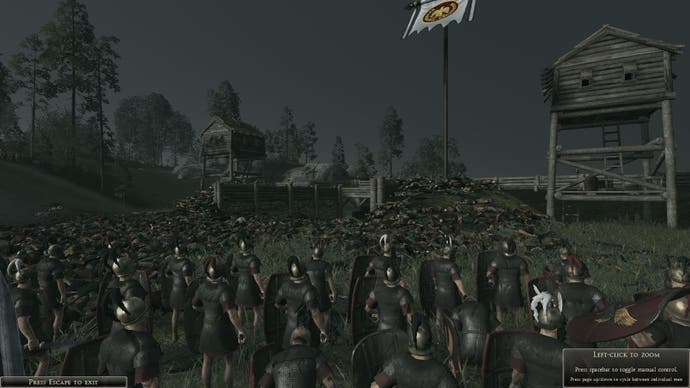
But while these improvements are meaningful (especially to those like myself who were exasperated by Rome 2's vanilla campaign), they are also fairly modest. It's Rome 2 with more convenient geography and less tactical diversity.
A major part of the problem is that Rome 2's diplomacy system - never a model of sophistication or rationality - is particularly out of place in a campaign about shifting alliances among belligerent tribes. The help text on loading screens will remind you to "divide and conquer", but the game you actually play is "your faction versus the world". AI factions commit completely to self-destructive wars and will placidly send army after army to their deaths. This is at least better than what they did in Rome 2, where it was a toss-up whether they'd fight to the death or offer to become a client state the instant you gave them an angry glance. Still, it's hard to have an interesting strategic landscape in a game where trade agreements and defensive alliances become rarer than unicorns. After the opening stages, Caesar in Gaul forces you to give up on diplomacy and slowly churn forward through wave after wave of enemies.
It can be a very slow and frustrating churn. Three different times I had to wait out battles because something glitched. Twice, I had routed every enemy unit in the first few minutes of the battle, but was never awarded the victory. I simply had to wait for the clock to run down. Another time, I was fighting a massive siege battle and hanging on to my ramparts by my fingernails... and then the AI's reinforcements parked themselves at the edge of the map and did nothing for the rest of the battle. Again, I had to wait it out.
Even at its best, Caesar in Gaul wears thin long before the end of the campaign. The terrain in Gaul is too flat and the tribes all too similar. Once you've cut down one swarm of shirtless barbarians on a broad plain, you've cut down all of them. If there were a bit more politicking, the context for all this slaughter might be a bit more engaging. But as it is, it feels like a race to see who can first finish paving all of France with a layer of corpses. Sometimes, war can be a bit too total.
